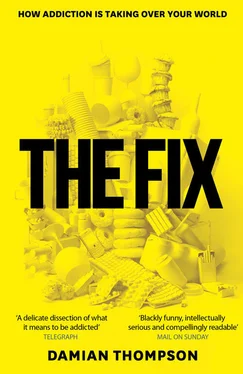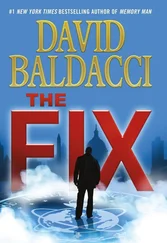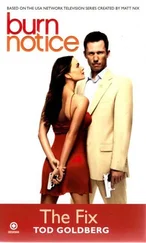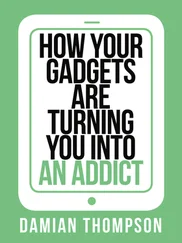‘iPhone owners live in a constant state of anxiety about their battery levels,’ says Milo Yiannopoulos, editor of The Kernel, an online culture magazine. ‘To some extent, the phone ends up structuring their day. For example, they tend not to plan to be out of the office for more than six hours at a time, in case they run out of battery and have to start knocking on doors, USB cable in hand, begging for a few minutes’ worth of charge to get them through the afternoon.’
Talk about the replacement of people by things. The 4S version of the iPhone, released in October 2011, includes a virtual assistant called Siri that responds to spoken instructions and speaks back to the user. This infant technology is already so complex that you can have entire conversations with Siri. She will then execute commands, in some cases fetching very specific data from the internet. ‘Intelligent personalised assistant software is going mainstream,’ says Yiannopoulos. ‘Never in the history of mass-market consumer electronics has the line between man and machine been so blurred.’
It’s significant that a quarter of respondents in the survey above said they found iPhones ‘dangerously alluring’. They are supposed to be. Absolutely nothing is left to chance in the design of these devices. If Apple customers have an embarrassing tendency to anthropomorphise their gadgets, that is because Apple has explored the possibilities of the human mind and body more thoroughly than any of its competitors.
For example, one of the most appealing features of the MacBook laptop line has been the status light, which pulsates gently when the computer is sleeping. Early reviewers cooed over the calming effect of the light, but couldn’t put their finger on why it felt so good to watch. Later, it was revealed that Apple had filed for a patent for a sleep-mode indicator that ‘mimics the rhythm of breathing’ and was therefore ‘psychologically appealing’. As the tech blogger Jesse Young noted, while Apple’s sleep light matched the pace of breathing while we sleep, Dell’s was closer to breathing during strenuous exercise. ‘It’s interesting how a lot of companies try to copy Apple but never seem to get it right. This is yet another example of Apple’s obsessive attention to detail,’ he wrote. 11 Конец ознакомительного фрагмента. Текст предоставлен ООО «ЛитРес». Прочитайте эту книгу целиком, купив полную легальную версию на ЛитРес. Безопасно оплатить книгу можно банковской картой Visa, MasterCard, Maestro, со счета мобильного телефона, с платежного терминала, в салоне МТС или Связной, через PayPal, WebMoney, Яндекс.Деньги, QIWI Кошелек, бонусными картами или другим удобным Вам способом.
Former Apple executives – who frequently brief American technology blogs off the record about the internal culture at Apple’s headquarters in Cupertino, California – describe the lengths the organisation goes to in order to create coveted products. There’s a design-dominated power structure that results in hushed reverence when Jonathan Ive, Senior Vice President of Industrial Design, walks into the boardroom. ‘Marketing and design have been fused into a single discipline at Apple,’ says Yiannopoulos. ‘Everything, from product strategy to research and development, is subordinate to making the products as beautiful and compulsive – that is, as addictive – as possible.’
It works. To quote an extreme example, in 2010 a schoolboy in Taiwan was diagnosed with IAD – iPhone Addiction Disorder. According to Dr Tsung-tsai Yang of the Cardinal Tien Hospital, his eyes were glued to his phone screen all day and all night. Eventually, ‘the boy had to be hospitalised in a mental ward after his daily life was thrown into complete disarray by his iPhone addiction’. 12 Конец ознакомительного фрагмента. Текст предоставлен ООО «ЛитРес». Прочитайте эту книгу целиком, купив полную легальную версию на ЛитРес. Безопасно оплатить книгу можно банковской картой Visa, MasterCard, Maestro, со счета мобильного телефона, с платежного терминала, в салоне МТС или Связной, через PayPal, WebMoney, Яндекс.Деньги, QIWI Кошелек, бонусными картами или другим удобным Вам способом.
Two days after it opened in 2010, I visited the Apple Store in Covent Garden – a magnificently restored Palladian building dominated by a glass-covered courtyard. The heady aroma of addiction was unmistakable. The misery in the queue for the Genius Bar, where broken computers are diagnosed, was painful to behold. Legs were crossed and uncrossed and eyebrows twitched every time a Genius read out a name. I couldn’t help thinking that these customers looked like addicts waiting for their daily dose of methadone.
I wanted to ask a Genius what it was like dealing with people who weren’t just asking what was wrong with their laptops but pleading for (literal) fixes. But finding someone who would talk was easier said than done.
First I went down the route of asking an Apple Store manager – a friend of a friend – whether he could chat off the record about the way the company seemed to encourage addiction to its products, or put me in touch with someone who would. His first response was encouraging, but then he changed his mind. He would be in big trouble if his bosses suspected he’d put me in touch with an indiscreet ex-employee, and he’d be fired on the spot if he got caught blabbing himself.
So I tried a different route. A start-up CEO friend of mine put out a message to one of his networks. Shortly afterwards, a young man called Ben Jackson, a social media entrepreneur, emailed to say he could meet me for coffee in Soho, London, a few streets from the Apple Store where he had spent two years as a Genius.
Ben, like many former Apple employees, inhabited the cooler end of the geek spectrum, with glasses offset by a gym-honed body. He didn’t need any prompting to talk about addiction to technology: the experience of seeing the addiction every day – deliberately stimulated by the company – was one of the reasons he left the store.
‘I saw a whole range of addictive behaviours. It’s one of the things that made the Apple Store such a surreal place to work. At one end of the scale you have the total Apple obsessives who exhibit a sort of religious fanaticism that the company does nothing to discourage – it encourages it, in fact. They’re the people who will book the same tutorial again and again, being shown how to do stuff they already know.
‘When a new product is launched, it’s the same faces at the front of the line every time. They treat the staff almost like celebrities, trying to ingratiate themselves. At the Genius Bar, they’ll show you Apple products from years ago, and you’ll have to pretend you haven’t seen them before, because they need their egos massaged. It’s kind of sad. Well, it is sad.’
But it’s not only the true obsessives who are touched by addiction, according to Ben. ‘There’s a general perception that Apple is awesome in a way that other companies aren’t – a perception that’s quite at odds with the way it operates behind the scenes. Even the products are considered awesome, which is why otherwise normal people would get quite disproportionately angry and upset if anything went wrong with them. And it’s also why there’s such unease if people think they’ve fallen behind, that their stuff is out of date. But the point is that you can’t keep up to date without spending a lot of money on things you don’t need, because the products are just coming out too fast.
Читать дальше












